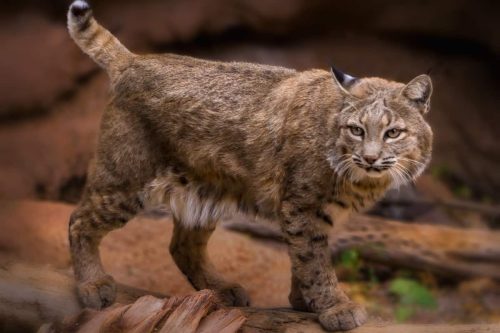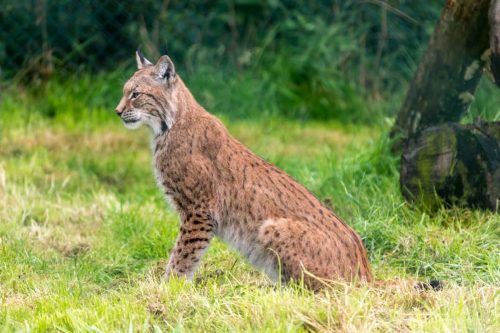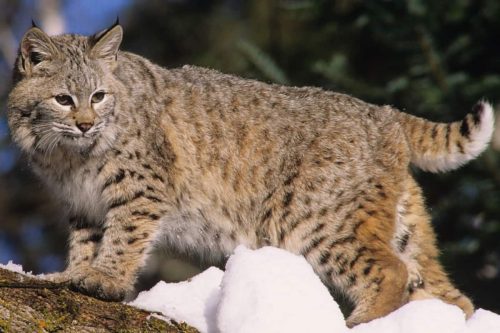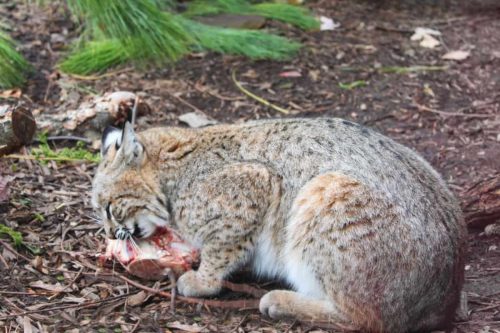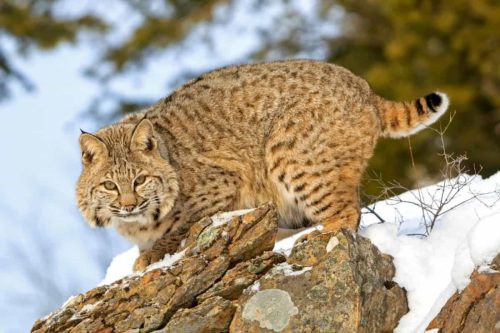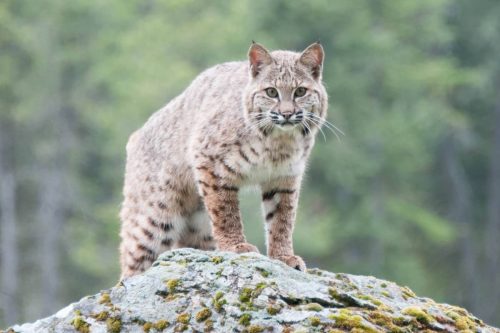Bobcats in Michigan: History and Future of Bobcats in Michigan
Bobcats are the wild cats of the North American continent. These wild cats are the highest in numbers if we compare these cats to other wild cat species. Bobcats had a very stable population in the early 19th and 20th centuries. There were around 2 to 3 million bobcats population throughout the continent. The population of the bobcat had been rising very rapidly due to their very adaptive nature and highly suitable habitat for them in most areas.
These cats can easily withstand various habitats like deserts, swamps, mountains, woods, marches, etc. However, the population of bobcats had started decreasing due to the loss of their habitat and excessive hunting of these cats for commercial reasons or getting their soft fur. The same thing happened with the availability of bobcats in Michigan. In this article, we are going to discuss the incumbent status of bobcats in Michigan.
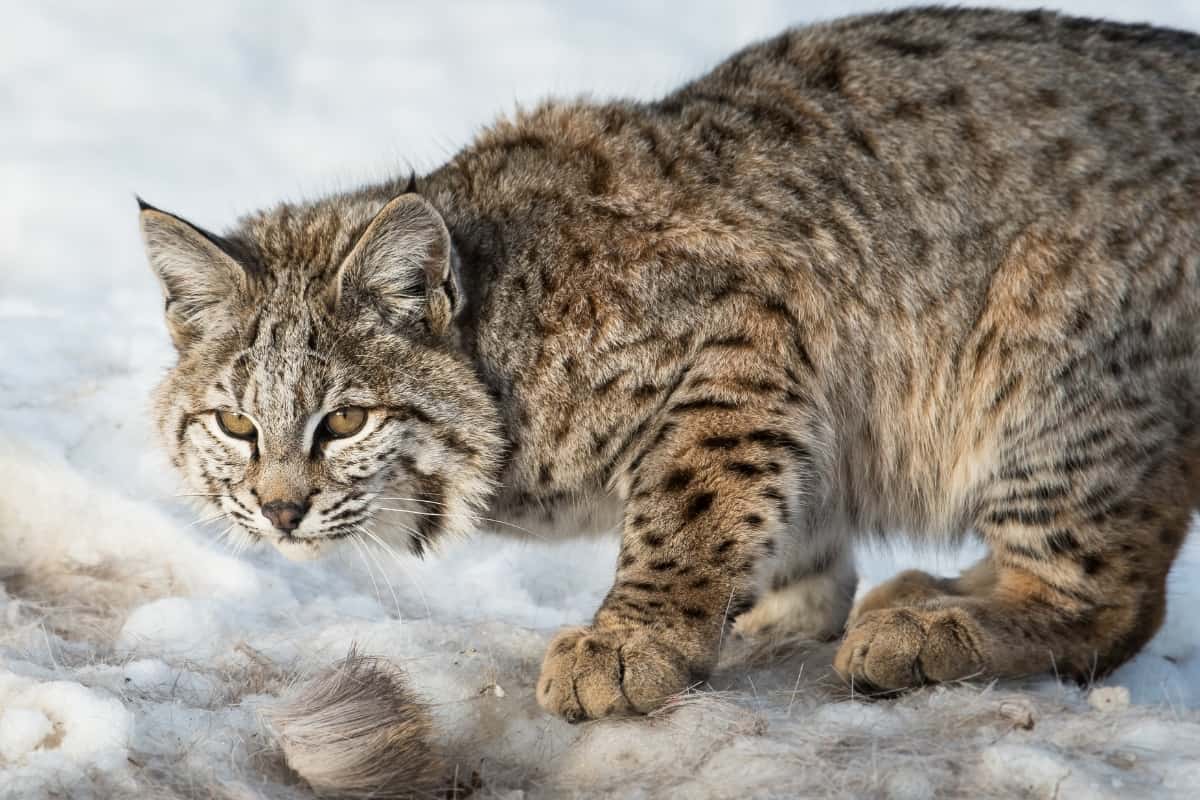
Contents
- Are there Bobcats in Michigan?
- Where do bobcats live in Michigan?
- Michigan bobcat hunting and trapping
- Animal rights activists’ concerns about bobcat hunting and trapping
- Michigan bobcat population map
- What should you do if you see a bobcat in Michigan?
- Are bobcats causing any problems in Michigan?
- Other wild cats in Michigan
- Frequently asked questions
- Conclusion
Are there Bobcats in Michigan?
Michigan boasts many wild cat species like cougar, lynx, and bobcats. Bobcats are the most widespread cats in the state. People have witnessed these cats in every nook and corner of the state. Despite having a large number of bobcats in the state, it is still extremely difficult to locate these cats in the state due to their elusive, shy, and nocturnal nature.
Indeed, bobcats are present all over the state but the major population of the bobcat lies in the northern side of Michigan. The population of bobcats is also on the rise in the southern half of the state. Bobcats are not usually seen by laymen. The sightings of the bobcats have actually increased only after the increase in the usage of trail cameras and game cameras.
According to the Michigan department of natural resource wildlife division, bobcats could be located in every county of the state and these cats have a very healthy, growing, and resilient population. Owing to a large number of these cats, hunting and trapping permits were allowed in most of the counties of the states.
Where do bobcats live in Michigan?
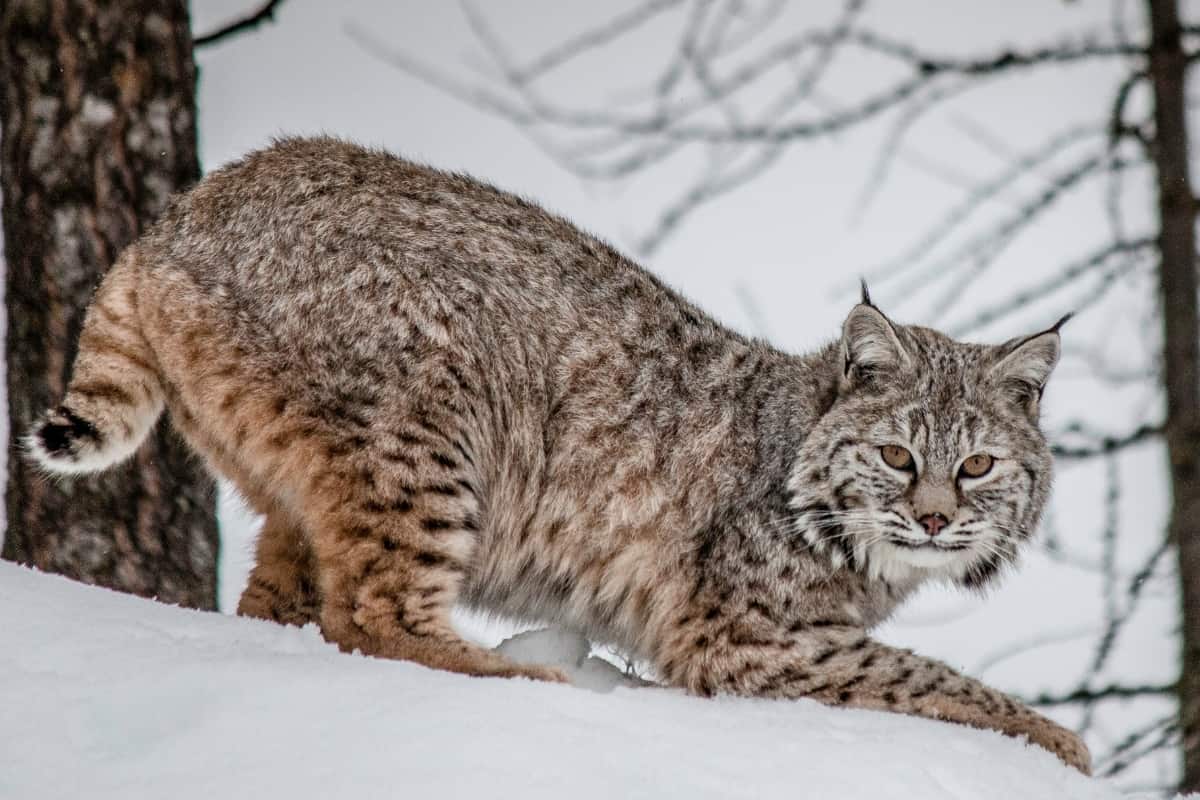
Bobcats always make homes in areas where they can enjoy favorable habitats, easily find prey and there is no threat from predators. In Michigan, bobcats are mainly found on the northern side which is full of forests, swamps, and bushy areas. They can also easily find their prey in the upper peninsula of the state. The northern side of Michigan is full of animals like rodents, fawns, birds, snowshoe hares, and some bigger animals like deer, goats, etc.
Moreover, bobcats are highly adaptable to different kinds of environments. That’s they can easily survive in coniferous forests, woodlands, deserts, swamps, and sub-urban areas. Michigan State also boasts of these kinds of habitats. However, the coat color of the bobcats also varies from one state to another. In this state, bobcats were also spotted in rocky areas and heavily vegetated slopes.
All of these habitats are favorable for the bobcats to live in. Bobcats are more concentrated in areas where they can also easily find their food and also where they have no threat from predators including human beings.
See our article for bobcats in Georgia.
Michigan bobcat hunting and trapping
Bobcats have quite a stable population throughout Michigan state. That’s why it was allowed to hunt and trap these cats for a limited time and in limited numbers. Generally, the shooting season of the bobcats starts on the 1st of January and ends on the 11th of January.
In the lower peninsula or southern side of the state, only one permit is issued for each hunter due low number of bobcats present in the state. The hunting season in the southern side would be longer and it is allowed for 20 days. In the upper or northern side of the state, hunters are allowed to hunt two bobcats each due to the good population of the bobcat in this portion.
According to some reports, 13,400 people have registered for the hunting and trapping of the bobcat in 2020. For people in the age bracket between 10 to 64 years, the hunting license cost around 15 dollars. For people in the age bracket between 65 and above, the hunting license costs around 6 dollars.
Generally, it is not easy to hunt or trap these cats. In one of the surveys, it was found that only 365 people out of 2810 have been able to successfully hunt these cats.
Here you can have the exact dates of the hunting and trapping season in Michigan to let you know when you can exactly hunt or trap bobcats in Michigan state.
| Region | Trapping | Hunting |
|---|---|---|
| Upper Peninsula | 25th October to 26th December | 1st January to 1st march |
| Northern lower peninsula | 10th December to 29th December | 1st January to 20th January |
| Southern lower peninsula | 10th December to 20th December | 1st January to 11th January |
Animal rights activists’ concerns about bobcat hunting and trapping
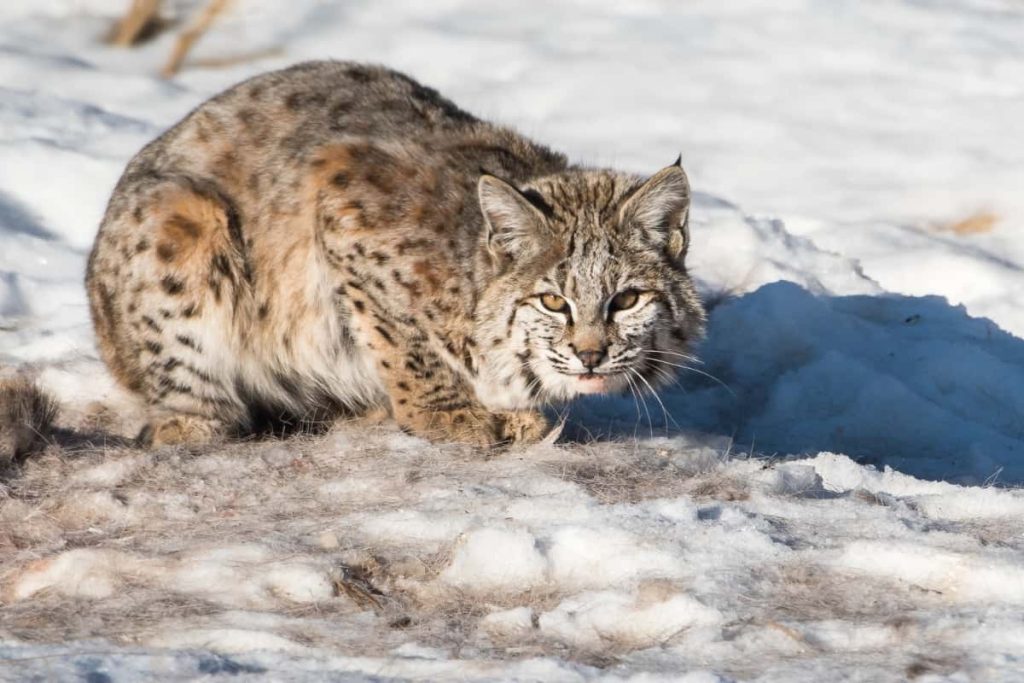
Animal rights advocates are raising this issue again and again and they have declared it cruelty against animals. Despite a very heavy campaign of these rights activists, the Natural resource commission of the state has unanimously approved the hunting and trapping season of the bobcats. Now, it is allowed in almost all states to hunt these cats for any reason. It is being said that bobcats are mainly killed for commercial reasons to get their fur and the expansion in the hunting and trapping activity could cause untold harm to bobcats to sand their kittens.
Many dependent kittens will be left orphans if their mother got killed. They may die out of starvation or due to predation activity. If the population of the bobcat goes down somewhere then it also helps increase the population of other small mammals like rodents, squirrels, chipmunks, etc. These small mammals play a very damaging role in your property and many other things in your household.
Michigan bobcat population map
Michigan has a stable population of bobcats. The numbers vary from one state to another. To ascertain the exact number of bobcats in the state, several surveys were done. For instance, in Escanaba, it was estimated by famous biologists that the average density of the bobcat in the state is about 0.8 bobcats in ten square miles. That’s quite a stable population.
However in the crystal falls areas, the number was larger and in this county, there was 1 bobcat in ten square miles. In these areas, if we compare the population of bobcats with the population of coyotes, we will come to know that coyotes are almost 5 times more in number than bobcats in these areas. Generally, it was also observed that the population of bobcats is much higher on the northern side of the state as compared to the southern side of the state.
Nevertheless, the population was also expanding on the southern side as was observed in the recent sightings and trends. The incumbent status of the bobcat population is much more credible as it is not just on the basis of human sightings but based on surveys of the different areas and more importantly, based on proof given through trail cameras.
What should you do if you see a bobcat in Michigan?

It is very rare to encounter these cats in any state of the USA due to their extraordinarily elusive and shy nature of these cats. However, it is also not impossible to spot these cats in the wilderness. You must take the following measures if you come across these cats anywhere in the wilderness.
- You must always maintain some distance from these cats and never get too close to these cats.
- Don’t run away as it could panic these cats and resultantly bobcats act very aggressively.
- Never turn your back to the bobcats and always move back from the front side slowly and gradually.
- If you are fearful of these cats, you must make some loud noises by using anything you find nearby or from your mouth.
- Splash water on bobcats if you can; bobcats don’t like water and these cats will definitely flee from the scene.
Are bobcats causing any problems in Michigan?
Bobcats are very elusive and shy in nature and don’t like to interact with human beings. These cats usually get away whenever they encounter human beings. It doesn’t mean people should go after them as these cats are after all wild cats and people should avoid these cats as much as possible.
But these cats could be a source of trouble for other animals especially the cattle of farmers. Bobcats have also been targeting pet animals like cats and dogs. It is recommended that you must always keep your pets as well as defenseless children inside your home if you think there could be any bobcats in your surroundings.
Other wild cats in Michigan
There might be many types of wild cats in Michigan state. However, there is confirmed proof about two of the wild cats. The department of natural resources has also provided proof of the presence of these cats in Michigan. It is also possible that a third type of wild cat species also exists in the state but we could not find proof of this.
One of these wild cats is the Canadian lynx. It is generally very rare to see these cats in Michigan state for the past 50 years. Since 2003, these cats were only seen three times in the state. One of the Canadian lynx was also captured in Michigan in 2019. Another wild cat is the bobcat which is quite widespread in the state. However, most of the sightings of these cats have occurred in the northern side but now the population of the bobcat is also rising in the southern peninsula.
Another very prominent wild cat specie is the cougar. These cats were the native of Michigan state but were completely eliminated in the early 1900s due to excessive hunting. The last known cougar wild cat was seen in 1906 in the state. However, DNR has reported a few sightings in recent years but with no evidence.
Frequently asked questions
Conclusion
Bobcats could be found anywhere in the USA as it is a very special wild cat that you can only find in the Northern American continent. When it comes to bobcats in Michigan, then you must know that Michigan has a very stable population of bobcats nowadays. These cats have gone almost extinct from the state but these cats expanding and growing very rapidly.
The main concentration of these cats mainly lies in the Northern peninsula of the state but the Southern side is also moving forward very fast with the quick growth of the bobcat population. With the extraordinary expansion of these cats in the state, it has been allowed to legally hunt and trap these cats for some specific days in some of the counties of the state where these cats exist in very large quantities.

Izzy is an experienced ranch worker who has a passion for exploring nature and getting up close to wildlife. With her connections to various animal organizations, Izzy is well-versed in animal care and rehabilitation.

